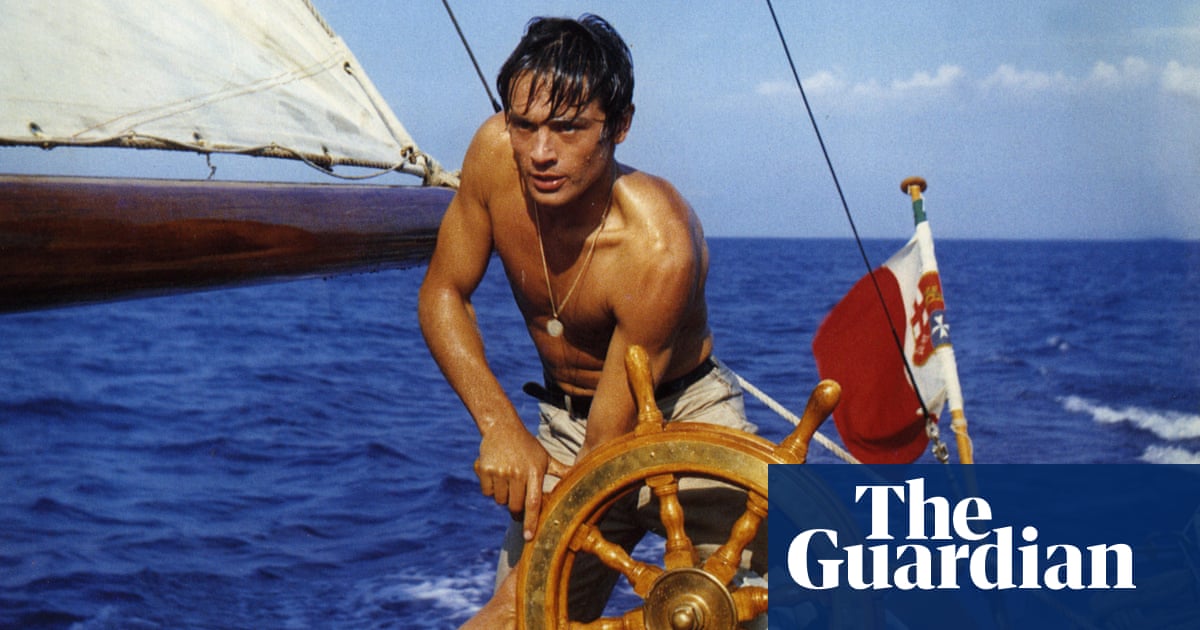
It’s hot out there, and it’s only getting hotter. This past month, Death Valley reported the highest average temperatures in the documented history of Earth, while one day in July set a new global record that was unseated just the next day as thermometer mercury continued climbing. Dozens of cities have logged unprecedented warmness in a year that scientists are identifying as the most inarguably, oppressively sweltering the modern human race has ever faced. Soon, the concept of going on holiday as it’s understood at present – of taking the summer months to travel somewhere hotter and sunnier than your day-to-day home town so that you can, presumably, relax – will seem counterintuitive.
The climate crisis is far from mind in the 13 titles gathered under Criterion Channel’s new Vacation Noir streaming series: tanned and sweaty tales of crime and betrayal cherry-picked from 1945 to 1973. Even so, many of these films suffer from the maddening effects of extreme heat, following characters turned short-tempered, ragged and desperate as the unforgiving sun beats down on them. The moral corrosion essential to the film noir genre was more readily located among the rain-soaked back alleys and dingy dive bars of the big city, but that still left plenty of room for trouble in paradise. A person spends enough time roasting on the beach, and the rays start to cook their brain. They get to hatching schemes, and before they know it, they’re booking a first-class ticket to hell.
The standard-bearing icon of noir – the hard-boiled private eye gazing upon the wickedness all around him with a detached cynicism befitting disillusioned post-second world war attitudes – is nowhere to be found around these parts. The series features mysteries aplenty, but they are investigated by unlikelier protagonists in keeping with the unlikely settings. The engrossing Dangerous Crossing (1953), for example, splits the role between a gaslit Jeanne Crain and her savior, the kindly physician Michael Rennie. After her husband vanishes into thin air onboard a pleasure cruise – narratively, an ancestor of the Jodie Foster thriller Flightplan – she must contend with condescending notions about female hysteria along with efforts to bump her off, her fragility all the more pronounced for the lowered guard of her honeymoon. There’s no better time for a crook to strike than vacation, when their marks have shed their stresses and obligations for a false sense of security.
No spoilers, but Dangerous Crossing’s eventual denouement hinges on one in a handful of set-ups involving furtive lovers and unwitting cuckolds – none so surprising and sensitively wrought as the central tension in 1947’s Desert Fury. No-goodnik gangster Eddie (John Hodiak) shacks up with the obstinate daughter (Lizabeth Scott) of a Nevadan casino magnate (Mary Astor, a no-nonsense powerhouse resplendent in Edith Head’s lavish costuming), with his eye on the family fortune. Strenuously objecting to this union, however, is Eddie’s right-hand man and interior designer, Johnny (Wendell Corey); the two friends are blatant as lovers even before Eddie tenderly recounts getting cruised in a Times Square automat at two in the morning. Johnny’s ensuing jealous, possessive obsession couples the film with 1945’s Leave Her to Heaven, in which Gene Tierney plays a woman disturbed to the point of sociopathy as she removes anything and anyone she perceives as an obstacle between her and her man. Both inch along the line between camp and earnest pathos, the drastic measures matching the intensity of feeling in plights that coax our sympathies even as they take turns for the torrid.
Tangled attractions stretching from coast to coast posit something like the opposite of a love story; these affairs fueled by self-interest instead model the worst the human soul can muster. Where Orson Welles’s memorable appearance in The Third Man unveiled the evil at the heart of geopolitics, his direction on The Lady from Shanghai two years earlier confronted the same turpitude on a more intimate person-to-person scale. Niagara (1953) leaves a similarly bitter taste in spite of its postcard-ready backdrop, with Marilyn Monroe hoist with her own petard as her ruse goes horribly awry. In either case, the willingness to transgress in the name of lust signals a wider malignancy in the world, forever resounding in the final note of hardened disgust at how low humanity can sink. Without necessarily invoking the war that marred the 20th century’s innocence, these films cast a despairing gaze on the general state of things even as cameras pan across their lush, ravishing locations. Kansas City Confidential (1952), for instance, suggests a shameless lack of honor among thieves as stickup men turn on each other in the Mexican hideout of Borados, and in doing so, provide the future Quentin Tarantino with the basis for Reservoir Dogs.
No one does existential angst like the French, a people so fixated upon ennui that they can’t even go on a getaway without reckoning with defects of the soul. Purple Noon (1960) and La Piscine (1969) form an Alain Delon double feature, not just flaunting one of the most preternaturally handsome people to have ever stepped in front of a camera, but a twinned sensibility of heat-fatigued indifference broken only by cruelty. Whether as the talented Tom Ripley in the singularly stylish take on Patricia Highsmith’s famed novel or as a callous writer holding his wife’s intruding ex in contempt (and underwater), he conjures a deep-seated darkness at odds with the escapist element of long lazy days in the lap of luxury. Particularly in La Piscine, as his character’s coarse sensuality melts in and out of outright violence, Delon sustains a perfect poker face at once concealing and wearing his barely suppressed hostility.
after newsletter promotion
Simultaneously the most jaded and playful of the pack, 1973’s The Last of Sheila hews closer to parlor game whodunit than anything else, with a dysfunctional clique of showbiz pals living out a round of Clue in the wake of their leader’s murder. With a diabolically clever, expectation-stymieing screenplay courtesy of Stephen Sondheim and Anthony Perkins, the inquest into the killer’s identity gradually shifts into a brutal lampooning of Tinseltown ego, as the sins of pedophilia and homicide pale in comparison to the promise of a blockbuster payday. (With friends like this, etc.) Its immaculate construction inspired Rian Johnson as he crafted the vacation-minded Glass Onion, but his tidy conclusion in which all the suspects band together to do the right thing flies in the face of this series’ overarching skepticism about the simple concept of goodness. After all, there’s something inherently selfish about taking a trip – of leaving co-workers to pick up your slack at the office, of letting anyone who needs you wait a while, of depending on the labor of others for pampering, of emitting the carbon required to fly somewhere else. When we go away, we take leave of ourselves, a transformation that can lead us to a calmer, happier version of ourselves as easily as it tempts us to damnation.
Source: theguardian.com

















